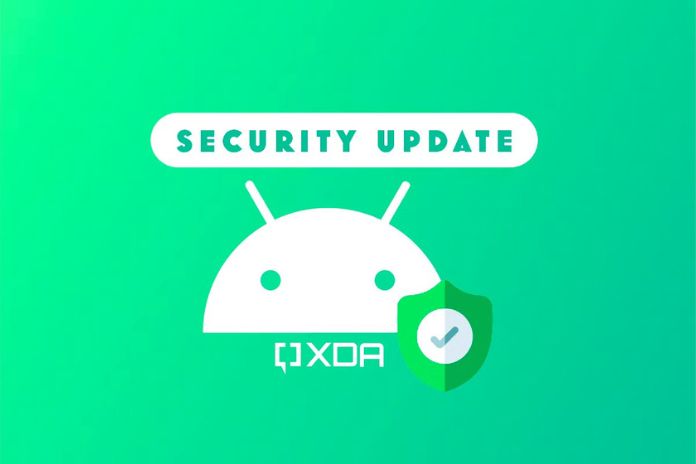No one can now do without the web, email, and other services we use daily, both in the office and at home. According to recent research, the average Internet user, at the European level, spends around eleven and a half hours a week online. Forums, blogs, instant messaging software, and social networking are the principal architects of the growing Internet interest on the user’s part.
However, criminals and objects expressly designed to steal personal information are increasing exponentially on the Net, often causing substantial economic damage. By now, many attacks are launched to extort or extort money and are therefore not limited to “programming exercises” as happened, in many cases, in the past.
Attackers are now accustomed to carefully studying the various services available on the Net, increasingly implementing social engineering techniques to encourage the most inexperienced user to carry out potentially risky actions (for example, opening a harmful attachment or a website containing harmful elements).
Furthermore, vulnerabilities of the browser, the operating system, and all the other software used to communicate on the Net are exploited more often if the user still needs to suitably resolve them through the application of the security patches released by the various producers.
Some malware also continuously sheds its skin by targeting specific behaviors.
The recent case of the “Storm” worm is emblematic: a variant of it, once established on the user’s system, installed itself in the form of an LSP (” Layered Service Provider “). Like a parasite, the malware thus became able to intercept and analyze all network traffic by actively intervening in outgoing packets. Whenever the user sends a message on a vBulletin or phpBB discussion forum, the malware – acting at a low level – automatically adds links to dangerous objects.
The Kaspersky Internet Security 7.0 security suite integrates a series of tools for all-around protection of the personal computer: antivirus, antispyware/antimalware, personal firewall, antispam, and “parental control” are some of the features offered. The suite the Russian Eugene Kaspersky designed confirms the modest impact on system performance even in its seventh version.
The product, equipped with a more pleasant user interface, does not negatively affect performance, giving its best even on somewhat “dated” personal computers. While appearing simple at first glance, Kaspersky Internet Security’s interface contains dozens of adjustments to benefit more experienced users.
With Panda Security, Avira, and G DATA, Kaspersky Internet Security is one of the most efficient antivirus engines in detecting and removing viruses and malware.
Kaspersky’s antivirus module scans files on your system as Windows tries to access them (real-time scan) at your request or runs a scan on a schedule.
Regarding email testing, Kaspersky supports POP3 and SMTP protocols (as most competing suites do) and offers protection for IMAP accounts and access to newsgroups (NNTP protocol).
There are four manual scan modes available: critical areas of the system or the first ones usually targeted by viruses and malware, computer resources, the elements that are responsible for starting up the system, rootkit scan (in this case, an examination of the whole system is carried out, focused on the search for elements that use masking techniques).
To drastically speed up the time it takes to complete various antivirus scans, Kaspersky avoids rescanning files that have not changed since the last scan. Using Alternate Data Streams (ADS) technology for this purpose means that some “false positives” will occur if scanned with third-party anti-rootkit tools – keep this in mind.
By accessing the advanced options ( Settings button ), it is then possible to adjust in depth all the aspects related to the configuration of the antivirus module, for example, the severity level of the heuristic scan (activated by default at a low level to avoid any false positives). Like most of the new generation suites, Kaspersky also carries out a behavioral analysis of the various programs, alerting the user to potentially dangerous actions that may be implemented.
The mechanism’s settings that monitor the behavior of the installed applications (called Proactive Defense ) can be customized by constantly referring to the Settings button or accessing the Protection pane, Proactive Defense, then clicking on Configure. The firewall module is one of the flagships of Kaspersky Internet Security 7.0. The Russian suite has succeeded in the difficult task of positioning itself in the correct way both towards the novice user and towards the more experienced user.
By default, the firewall is set to a low level of protection: all network activities are allowed except those expressly prohibited by setting appropriate rules. By opting for “learning mode,” Kaspersky’s firewall displays a warning message when an application tries to access the Internet or act as a server. At this point, if the program is known, Kaspersky offers to create a rule automatically.
By clicking on the Custom option, the more expert user can create stricter rules by operating on ports, protocols, and hosts. The firewall was excellent, not showing processes “attackable” directly by malware in the Task Manager and rejecting multiple attempts to disable it.
The personal firewall identifies, right from the moment of installation, the various known and trusted applications that usually request access to the Internet: the most appropriate rules are instantly created for each of them (possibly customizable by the user by clicking on the Settings button then on the Application Rules tab ).
The antispam filter can be improved (the antispam module integrates directly with Outlook, Outlook Express, and The Bat! while supporting all mail clients): while using a hybrid solution based on blocklists, deletion of messages containing recurring words in junk mail, checking the characteristics of the incoming mail (wrong HTML tags, presence of links to images saved on remote servers, message body without text and consisting only of images,…), Bayesian filters, the module to combat junk mail requires of a rather long “training” period.
The content control module is disabled by default. Once enabled, it integrates with Windows user account management. Kaspersky Internet Security assigns all users the “child” setting by default. This means that the Kaspersky suite will automatically block the display of all categories of websites with obscene, unsuitable, or inappropriate content.
By accessing the settings window and then clicking on the appropriate button, it will be possible to associate – to each user – a specific profile. Of course, choose a password so unauthorized persons can use accounts with higher user rights. The “Child” and “Adolescent” profiles are entirely customizable: it is possible to decide which categories of websites can be viewed and whether access to chat and webmail should be granted or denied.
The Time limit option offers the possibility to set web browsing restrictions allowing the user to “surf” only within specific times. The “Adult” profile, on the other hand, does not have any limitations. The filtering action exercised by Content Control is based both on an archive of known Internet addresses and on real-time analysis of the web pages to be consulted.
Whichever browser you use, the message Access denied – The requested URL could not be retrieved – The request object is forbidden displayed instead of blocked pages. Every attempt to visit unsuitable websites is logged in a log file. The filter has proven to be very effective. While not being able to add more profiles in addition to those already present (“Child,” “Teenager,” and “Adult”), Kaspersky was able to block navigation within all types of obscene websites or websites unsuitable.
Pros:
- a fast suite that does not “weigh” too much on the system
- effective and widely customizable antivirus and antispyware protection
- excellent firewall module
- revised user interface, enjoyable to use
Cons:
- – the antispam module that can be improved
Kaspersky also provides only the antivirus module ( Kaspersky Anti-Virus 7.0 ). It is a product that integrates system, email, and web content scanning mechanisms. Kaspersky Anti-Virus also includes “Proactive Defense,” which allows you to block the activity of potentially harmful components based on their behavior.
The trial version, fully operational for 30 days from the installation, can be downloaded by referring to this address (about 30 MB).
ALSO READ: Information Security On Mobile Devices: How To Keep Your Company Risk-Free?








